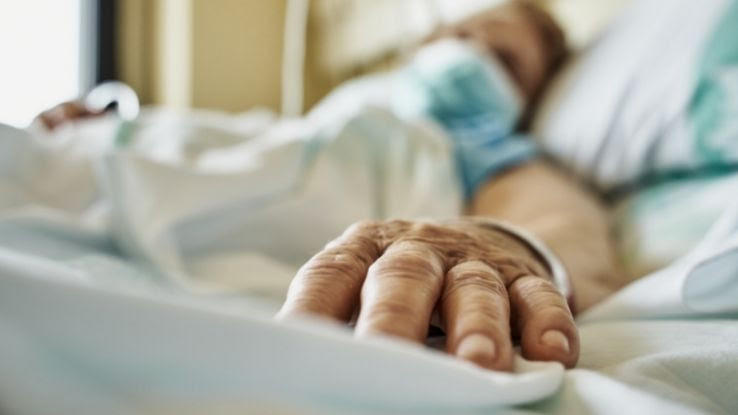Our Pacific Prime Statements
Our Pacific Prime Statements
Blog Article
Pacific Prime Things To Know Before You Get This
Table of ContentsThe Facts About Pacific Prime RevealedExcitement About Pacific PrimeThe 8-Second Trick For Pacific PrimeExamine This Report on Pacific PrimeHow Pacific Prime can Save You Time, Stress, and Money.

This is since the data were collected for a duration of strong financial performance. Of the estimated 42 million people that were without insurance, almost about 420,000 (about 1 percent) were under 65 years old, the age at which most Americans come to be eligible for Medicare; 32 million were adults in between ages 18 and 65, about 19 percent of all adults in this age; and 10 million were children under 18 years old, regarding 13.9 percent of all youngsters (Mills, 2000).
These estimates of the variety of persons without insurance are created from the annual March Supplement to the Current Population Survey (CPS), carried out by the Census Bureau. Unless or else noted, national price quotes of individuals without medical insurance and proportions of the population with different kinds of coverage are based on the CPS, one of the most commonly used resource of quotes of insurance coverage and uninsurance rates.
Some Known Facts About Pacific Prime.

Still, the CPS is particularly helpful due to the fact that it creates annual price quotes fairly swiftly, reporting the previous year's insurance coverage approximates each September, and since it is the basis for a regular set of quotes for greater than 20 years, permitting evaluation of patterns in insurance coverage gradually. For these reasons, as well as the substantial use the CPS in various other research studies of insurance coverage that exist in this report, we rely on CPS price quotes, with restrictions noted.

The estimate of the variety of uninsured individuals broadens when a population's insurance policy standing is tracked for a number of years. Over a three-year period beginning early in 1993, 72 million individuals, 29 percent of the united state population, were without insurance coverage for at the very least one month. Within a solitary year (1994 ), 53 million people experienced at least a month without protection (Bennefield, 1998a)
6 out of every ten uninsured grownups are themselves used. Although functioning does enhance the probability that one and one's relative will have insurance coverage, it is not an assurance. Also members of households with 2 permanent breadwinner have almost a one-in-ten chance of being without insurance (9.1 percent without insurance rate) (Hoffman and Pohl, 2000).
More About Pacific Prime
New immigrants account for a significant percentage of people without medical insurance. One analysis has connected a significant section of the current development in the dimension of the Visit This Link U.S. without insurance populace to immigrants who arrived in the nation between 1994 and 1998 (Camarota and Edwards, 2000). Current immigrants (those who pertained to the USA within the past four years) do have a high price of being without insurance (46 percent), but they and their kids account for just 6 percent of those without insurance policy country wide (Holahan et al., 2001).
The partnership in between health insurance coverage and accessibility to care is well established, as recorded later in this chapter. Although the partnership in between health and wellness insurance policy and health results is neither straight nor straightforward, a comprehensive medical and wellness solutions research study literary works links medical insurance coverage to better accessibility to care, far better top quality, and enhanced individual and population health standing.
Levels of analysis for analyzing the impacts of uninsurance. This discussion of health insurance coverage concentrates primarily on the U.S. populace under age 65 because essentially all Americans 65 and older have Medicare or other public coverage. Additionally, it focuses especially on those without any kind of wellness insurance policy for any length of time.
The Of Pacific Prime
The issues faced by the underinsured are in some areas similar to those faced by the without insurance, although they are normally less severe. Wellness insurance policy, nonetheless, is neither required neither adequate to gain access to clinical solutions. The independent and direct impact of health insurance policy coverage on access to health and wellness solutions is well developed.
Others will acquire the health care they require even without medical insurance, by paying for it out of pocket or seeking it from service providers that offer treatment cost-free or at highly subsidized prices. For still others, medical insurance alone does not make certain invoice of treatment because of other nonfinancial barriers, such as a lack of healthcare companies in their area, restricted access to transportation, illiteracy, or linguistic and cultural differences.
The smart Trick of Pacific Prime That Nobody is Talking About
Official study regarding uninsured populaces in the USA dates to the late 1920s and early 1930s when the Committee on the Cost of Healthcare produced a series of records regarding financing physician office brows through and hospital stays. This concern became salient as the numbers of medically indigent climbed up during the Great Depression.
Report this page